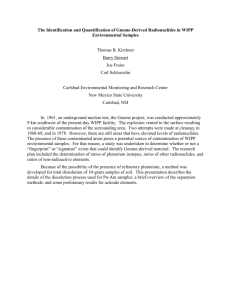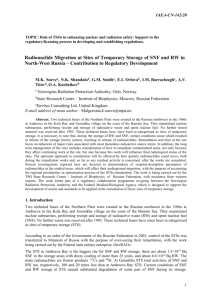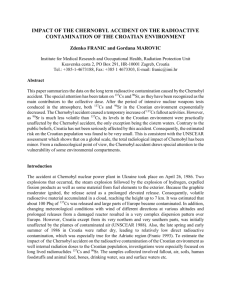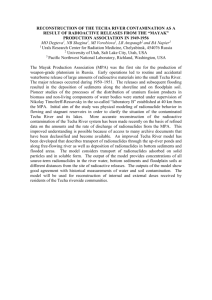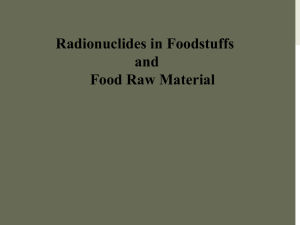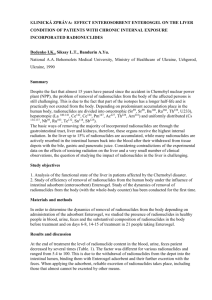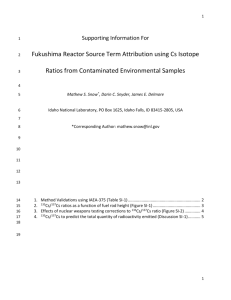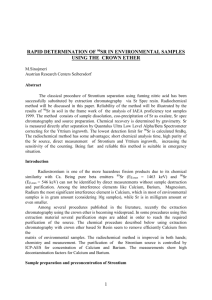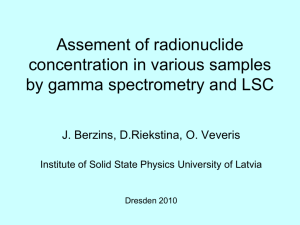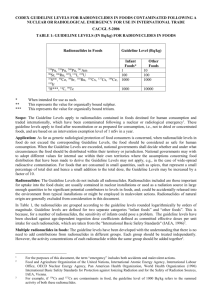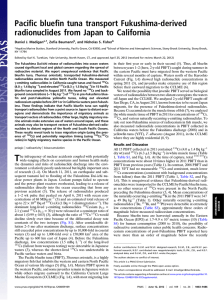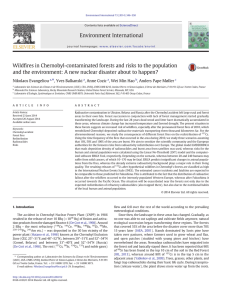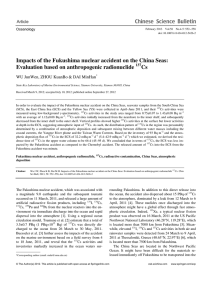New Phytoremediation Method for the Cleaning of Radioactive
advertisement
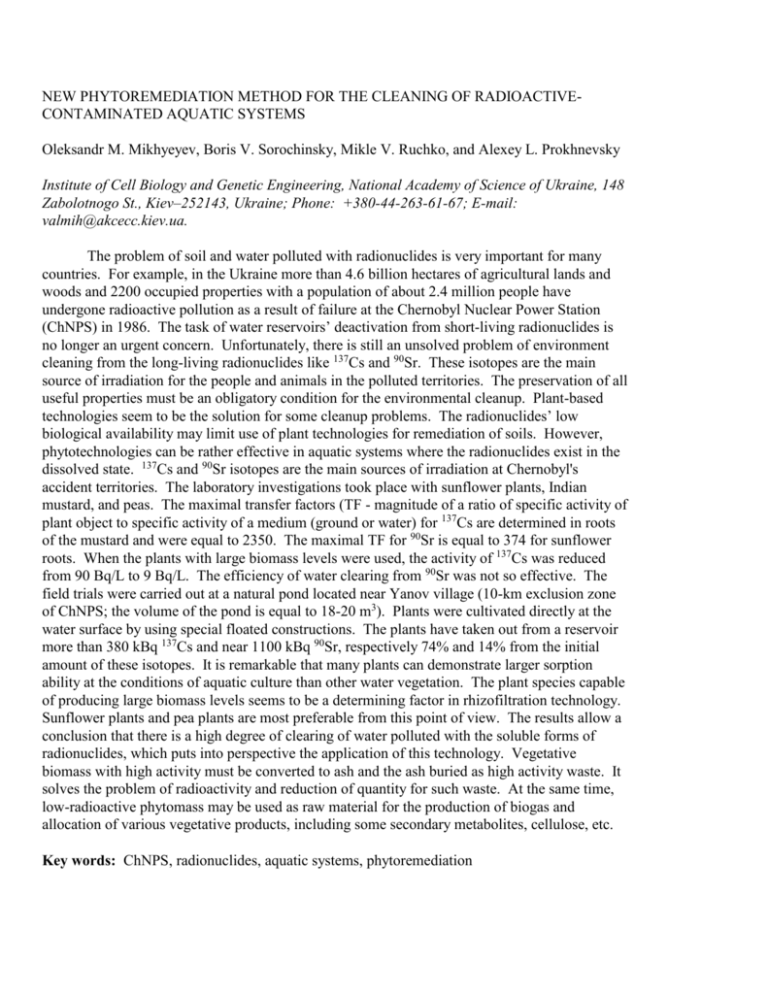
NEW PHYTOREMEDIATION METHOD FOR THE CLEANING OF RADIOACTIVECONTAMINATED AQUATIC SYSTEMS Oleksandr M. Mikhyeyev, Boris V. Sorochinsky, Mikle V. Ruchko, and Alexey L. Prokhnevsky Institute of Cell Biology and Genetic Engineering, National Academy of Science of Ukraine, 148 Zabolotnogo St., Kiev–252143, Ukraine; Phone: +380-44-263-61-67; E-mail: valmih@akcecc.kiev.ua. The problem of soil and water polluted with radionuclides is very important for many countries. For example, in the Ukraine more than 4.6 billion hectares of agricultural lands and woods and 2200 occupied properties with a population of about 2.4 million people have undergone radioactive pollution as a result of failure at the Chernobyl Nuclear Power Station (ChNPS) in 1986. The task of water reservoirs’ deactivation from short-living radionuclides is no longer an urgent concern. Unfortunately, there is still an unsolved problem of environment cleaning from the long-living radionuclides like 137Cs and 90Sr. These isotopes are the main source of irradiation for the people and animals in the polluted territories. The preservation of all useful properties must be an obligatory condition for the environmental cleanup. Plant-based technologies seem to be the solution for some cleanup problems. The radionuclides’ low biological availability may limit use of plant technologies for remediation of soils. However, phytotechnologies can be rather effective in aquatic systems where the radionuclides exist in the dissolved state. 137Cs and 90Sr isotopes are the main sources of irradiation at Chernobyl's accident territories. The laboratory investigations took place with sunflower plants, Indian mustard, and peas. The maximal transfer factors (TF - magnitude of a ratio of specific activity of plant object to specific activity of a medium (ground or water) for 137Cs are determined in roots of the mustard and were equal to 2350. The maximal TF for 90Sr is equal to 374 for sunflower roots. When the plants with large biomass levels were used, the activity of 137Cs was reduced from 90 Bq/L to 9 Bq/L. The efficiency of water clearing from 90Sr was not so effective. The field trials were carried out at a natural pond located near Yanov village (10-km exclusion zone of ChNPS; the volume of the pond is equal to 18-20 m3). Plants were cultivated directly at the water surface by using special floated constructions. The plants have taken out from a reservoir more than 380 kBq 137Cs and near 1100 kBq 90Sr, respectively 74% and 14% from the initial amount of these isotopes. It is remarkable that many plants can demonstrate larger sorption ability at the conditions of aquatic culture than other water vegetation. The plant species capable of producing large biomass levels seems to be a determining factor in rhizofiltration technology. Sunflower plants and pea plants are most preferable from this point of view. The results allow a conclusion that there is a high degree of clearing of water polluted with the soluble forms of radionuclides, which puts into perspective the application of this technology. Vegetative biomass with high activity must be converted to ash and the ash buried as high activity waste. It solves the problem of radioactivity and reduction of quantity for such waste. At the same time, low-radioactive phytomass may be used as raw material for the production of biogas and allocation of various vegetative products, including some secondary metabolites, cellulose, etc. Key words: ChNPS, radionuclides, aquatic systems, phytoremediation

